THREE OLD FRANCES 26s are presently under full reconstruction! And two excellent renovations have been completed. Meaning in less than a year there will be what are five essentially brand new yachts of this design afloat! The FRANCES is one of the most loved small but capable cruising yachts ever devised. Find one of your own, spruce her up, and sail the world!
ORIGINAL FRANCES DIMENSIONS
LOA: 25′ 10″
LWL: 21′ 3″
BEAM: 8′ 2″
DRAFT: 3’ 10″ (NOW 4′-2″)
DISPLACEMENT, as built: 6800 to 7000 lbs Full load 7300 to 7500 lbs (approx)
BALLAST (lead): 3,500 lbs
SAIL AREA (100% foretriangle): 310 to 345 sq ft (varies)
DISPL/L RATIO: 316 – 339
SAIL AREA/DISP RATIO: 14.5 to 15.5 (varies)
Here is the great news. Five of these wonderful yachts are undergoing soup to nuts reconstruction. Four were originally built by Tom Morris in the late 1970s or early ’80s and in need of significant restoration, in three cases, and a complete rebuild in one. They are MA 2, RACHAEL, STORMY, NUTCRACKER, and DANSKA. Nutcracker was built one-off using WEST System cold molded wood, and her reconstruction is completed.
Just for fun, here are some “before” photos.
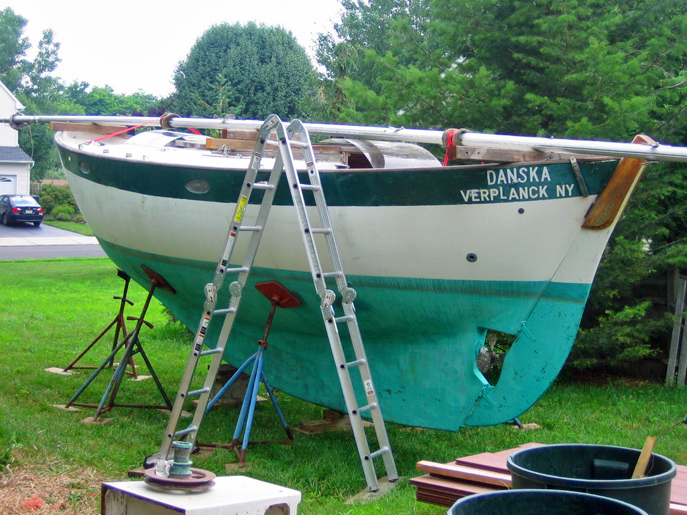
DANSKA. Her maintenance was let go to the point where she needed an entirely new interior, deck, and engine.
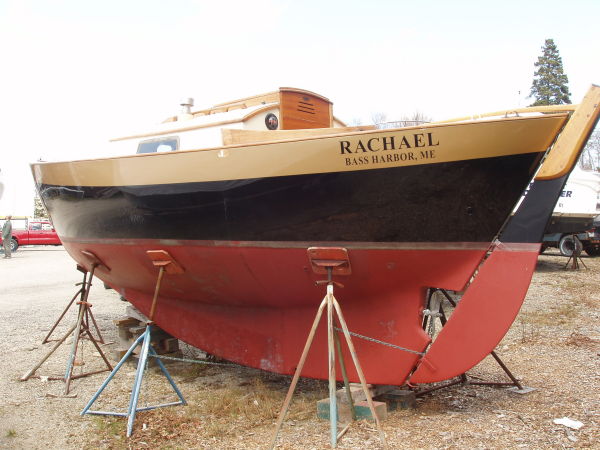
RACHAEL.
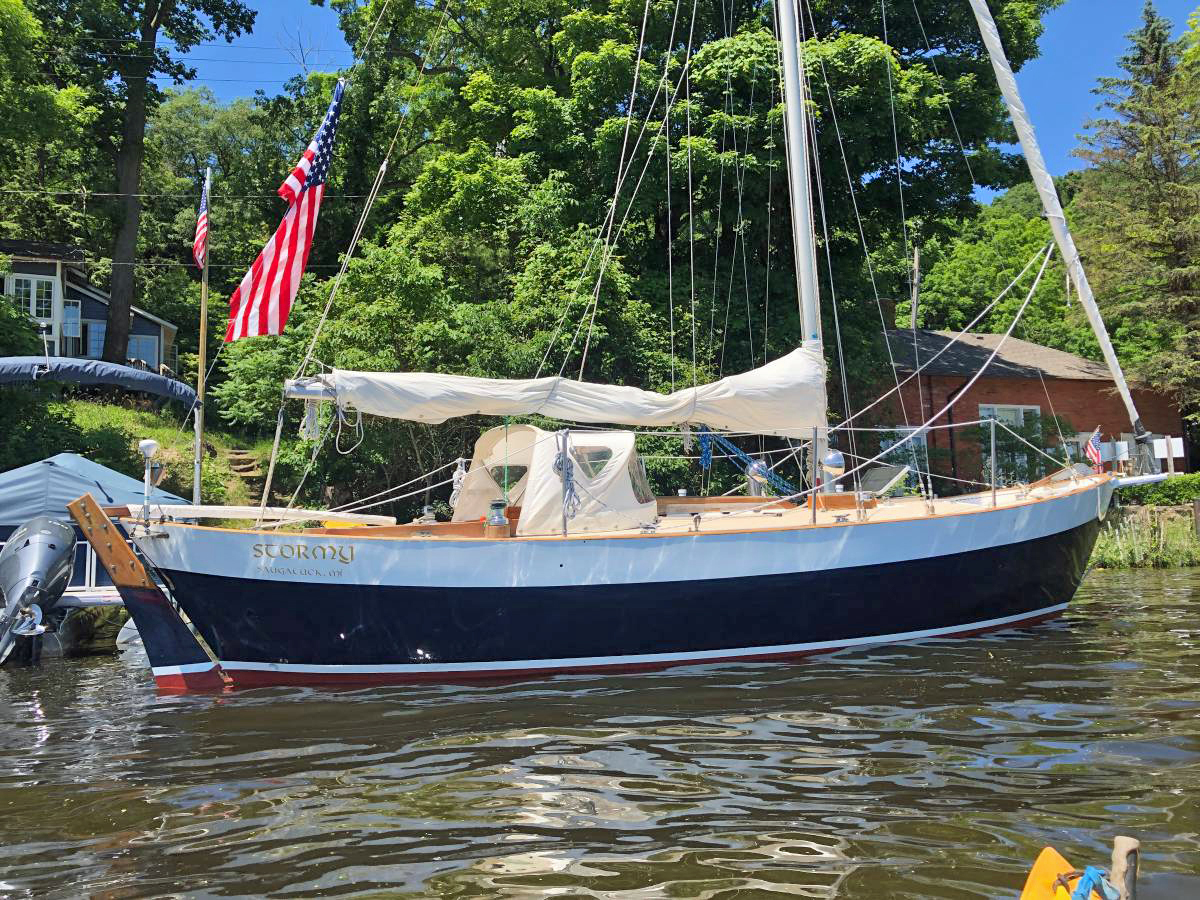
STORMY before her restoration.
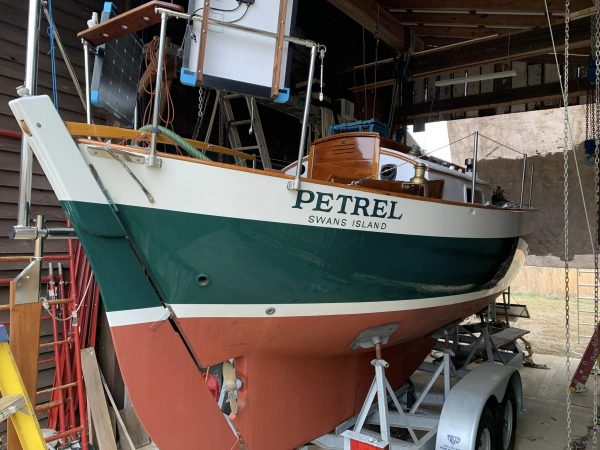
PETREL. She hardly needed much restoration, but a new owner spent four years improving her anyway.
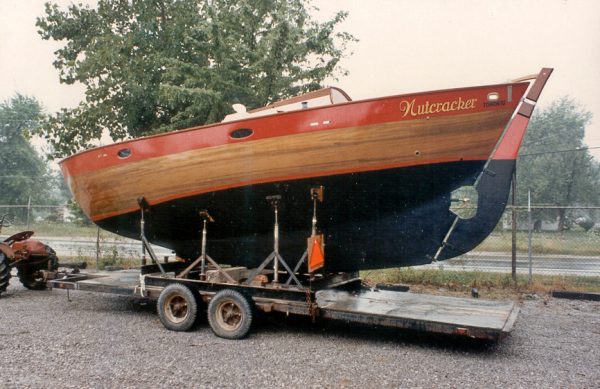
NUTCRACKER as originally built in the late 1970s. She has a WEST System hull.
PETREL has been renamed MA 2. She required the least upgrading.
NUTCRACKER has retained all of her original characteristics, including her interesting small house. Her restoration is complete, and she is beautiful.
All the new rigs specify a roller-furler for the genoa, plus a deployable Spectra inner forestay and Solent jib for windier conditions. If you own an old Frances and want to improve it, or can buy one for a reasonable price but are realistic about the significant cost to bring it up to date, contact the designer and invest in a new rig and sails and perhaps interior and propulsion that will significantly improve your boat’s performance.
The original FRANCES hull has a deep-bellied shape similar in many ways to Olin Stephens’ famous DORADE and STORMY WEATHER, so the FRANCES compensated with an unusually low center of gravity thanks to what can only be described as a massive 3500 pounds or more of lead ballast. Hers is a hull that has stood the test of time.
Two of the yachts will have the keel profile altered- deepened aft- for better windward performance. This will replace the previous swept-up aft shoal draft keel with a more modern, 2″ deeper and therefore more effective one. Since most of the original molded keel will remain in place and an equally strong portion added to it, this area will also serve as a “crush zone” which will mitigate any possible water intrusion in any but the most catastrophic grounding.
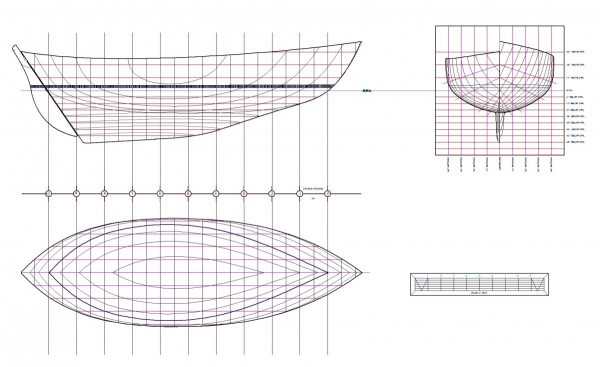
THE new keel profile – deepened aft for less sideslipping than the original keel.
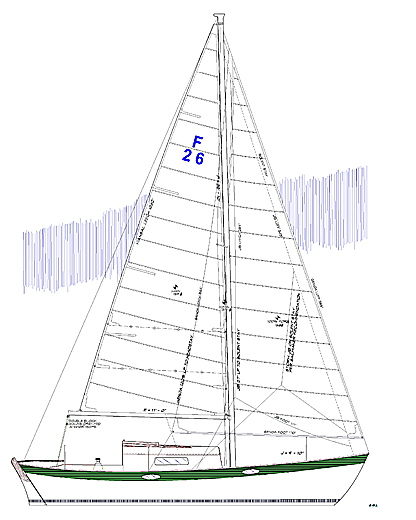
RACHEL’S new sailplan has more sail area to take advantage of her new carbon fiber mast with swept-back spreaders and simpler rigging than the original. The original FRANCESes were by no means slow, but the investment in a light and strong carbon mast will significantly enhance her performance.
THE NEWEST SAILPLAN (above). It uses a carbon fiber mast and simplified rigging with sweptback spreaders, a single aft lower shroud, and larger diameter stainless steel rigging. The offshore or inshore mission of each boat can be addressed by the amount of overlap of the genoa. This particular boat’s owner anticipates heading off on an immediate ocean crossing, so the genoa is of modest overlap and a deployable Spectra stay and Solent jib are available for heavy weather. If the owner ever wanted to try his hand at racing a 150% genoa for light airs and spinnaker for offwind would be a must.
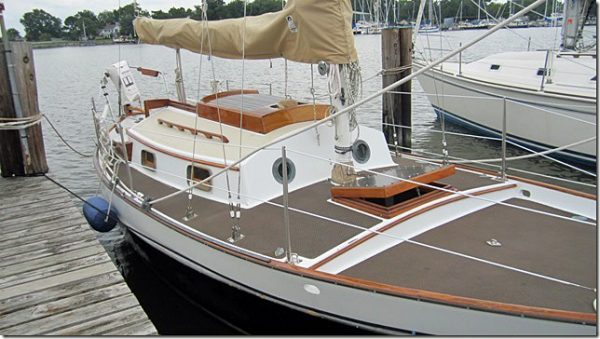
Two of the new yachts will have a short cabin very similar to this, perched atop the midship raised deck. The perception of space this lends to the interior is quite amazing. And it enables one to sit upright on settees or berths.
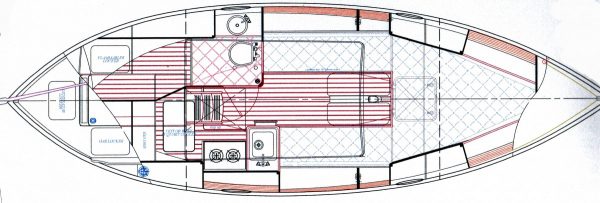
Here’s the DANSKA, now FULL CIRCLE’s arrangement with commentary by Chuck.
Let me walk you through it. I hate conventional sail lockers. I am claustrophobic, so if I ever have to work on the stuffing box, after trying to get a too big sailbag or ten to give birth through a too small opening, against the force of gravity, once I get down in there trying to sit on a sloping inside of a hull, I have visions of the lid falling shut and the little haspy locky thing engaging and I can’t get out. It actually happened to a friend of mine, on a day when nobody was around the boatyard so screaming wasn’t going to be heard. He survived but it is a story I will never forget. So on the port side it is completely open to the interior, there is a flat floor clad with teak and holly vinyl, and you can sit there comfortably after SLIDING the sailbags and the heavy spare anchor out- no lifting! The opening into the aft end of the engine and stuffing box will be huge, so maintenance will actually get done and if the boat is taking on water and the most likely culprit is the stuffing box you can get to it STAT. On the starboard side there is a shorter flat floor, which will accommodate one of those wonderful Coleman cooler thingies that are much more efficient at holding cold than your common yacht icebox, and if you want to you can buy the 12 volt electrical one and actually make ice! On the port side is the enclosed head. Only it’s not always enclosed. Its walls come up to about waist height. So standing up in the boat you have a view all the way aft into the aforementioned “sail locker room”, and more importantly out the big cabin window on that side and the little opening port into the cockpit. I’m all about sightlines, and this will make this boat seem half again larger than it is. There will be lightweight slide-up or maybe fanfold panels that can make the head fully enclosed if someone is squeamish, or wants to take a shower. Much of the “floor” is the inside of the hull thus not flat, so it plus the small truly flat part inboard will be clad with a nice bathroom flooring vinyl, so it all looks and feels like floor. The toilet has enough foot space aft of it that even Bob Perry with his long legs can fit. The galley is to starboard, and is smallish, yes, this is true. I already mentioned the aft part- just like the opposite side there is a flat floor, clad with teak and holly vinyl. Much of the time this will have the amazing Coleman cooler sitting on it. But if this is removed, and the companionway stairs and entirely removable engine box removed, one can sit there, on a flat floor, and do maintenance on either side of the entirely exposed engine. Outboard of this is a lot of storage. The galley is self-evident, except that the after gimbal of the gimballed stove is on a post not a bulkhead so as to make access into the after space that much easier. The galley sink is undermounted so an infill can be put there to create some much needed counter space. Forward of this are the two settee/berths which are proportioned to make good sea berths. Forward of this at the same level the cushions merge into the veeberth. One can simply slide one”s butt along to get into and out of the veeberth – no change in level. An infill turns the forward area into a full length double berth.
So what can I say in general about this interior? It would be luxurious for a singlehander, and he/she could “entertain” someone in the forward berth should the occasion arise. It would be luxurious for a couple, and they could sleep in separate seaberths at sea, and together forward when level. It could accommodate my son and his wife and their two daughters as long as the kids are not old enough to demand privacy. Indeed this is the mission I have designed the boat for- I am going to give it to them when I am finished restoring her. It is ideal for someone like me who is claustrophobic, with its wide open access to the electric motor and drive train aft, and sightlines from one end to the other. I have of course what must be seven or eight other interiors for the Frances, most of them from the days when I thought of it as a “camp-cruiser”… Toilet under a settee cushion- that sort of thing. This one is much more long-cruise friendly.fast by today’s standards, but they were so cute and stylish that owners have enjoyed every minute of their use for decades. With over 40 years to think about many attractive upgrades, these three reconstructed yachts will approach perfection! If you were to build an entirely new FRANCES today, since the Morris and Victoria molds have been destroyed, such a vessel would cost over half a million dollars to build. But with luck you can find one on the brokerage market that is old and tired and therefore affordable, put admittedly a lot of time and money into it, and have an essentially new and lovely vessel in which to range the oceans of this world for another half century. HERE ARE SOME PHOTOS of the restoration projects. These will be added to as the owners make progress.
AT THIS POINT only photos of STORMY, PETREL and NUTCRACKER are available. Here are a few. Fair warning… you get what you pay for. And then you pay for what you get. The photos of STORMY are of what you pay not a lot for. But after the application of a lot of money and sweat, she now looks virtually new.
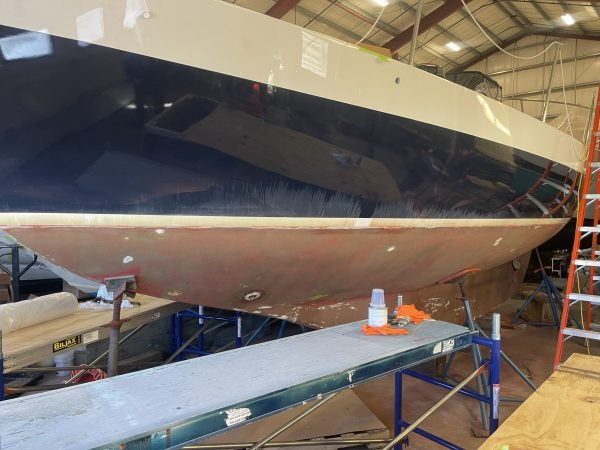
THE HULL. Any hull laid up by Tom Morris’s shop is as good after a few decades as the day it was born. It’s the cosmetic bloom that fades from the rose with time. And this can be restored with enough love and money,
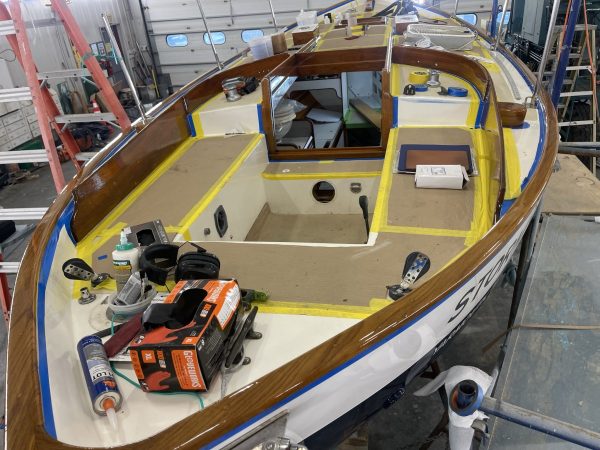
STORMY’s deck restoration and revarnishing nearing completion.
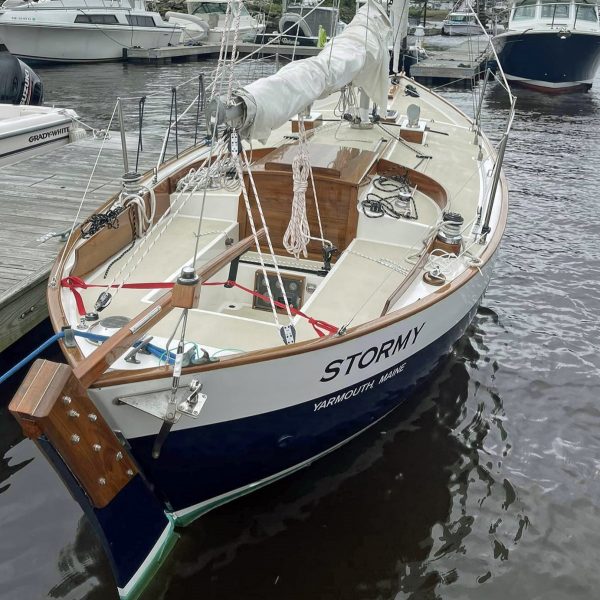
STORMY looking essentially like new.
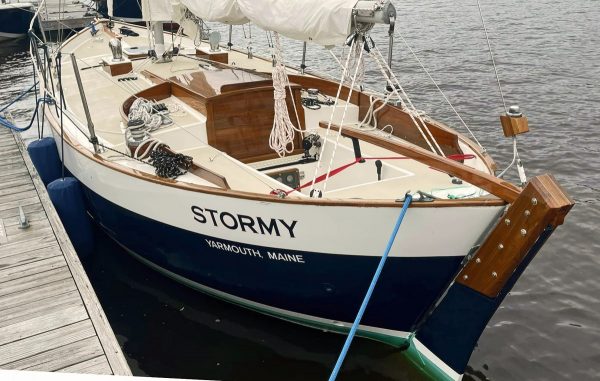
I LOVE STORMY’s custom curved coamings/seatbacks.
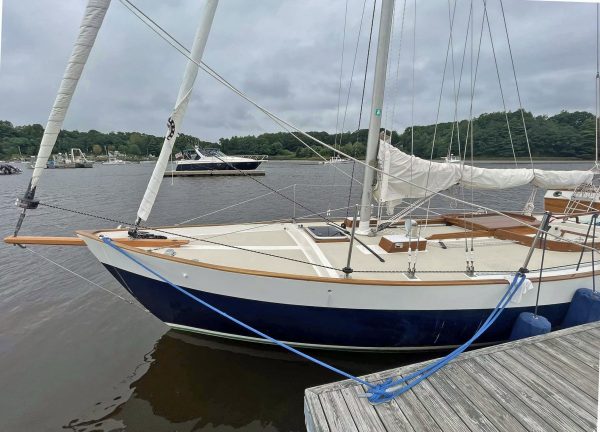
STORMY’s foredeck.
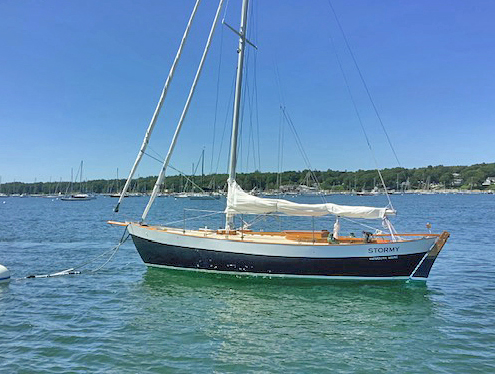
STORMY. She is in like-new condition, and comparable with a brand-new custom Frances that would cost over half a million dollars to build today.
MA 2 is the original PETREL, being repainted and refitted for further offshore sailing.
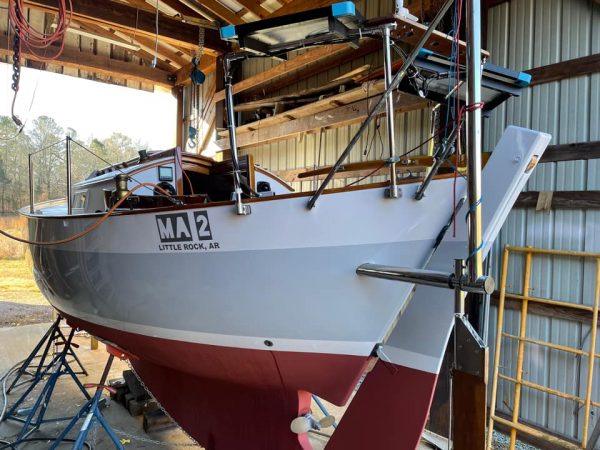
MA 2 after four years of restoration. Looking good.
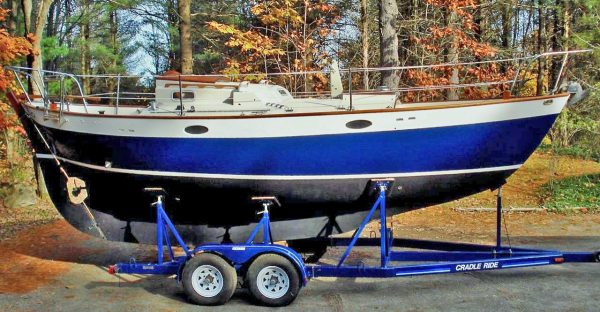
NUTCRACKER after her restoration.
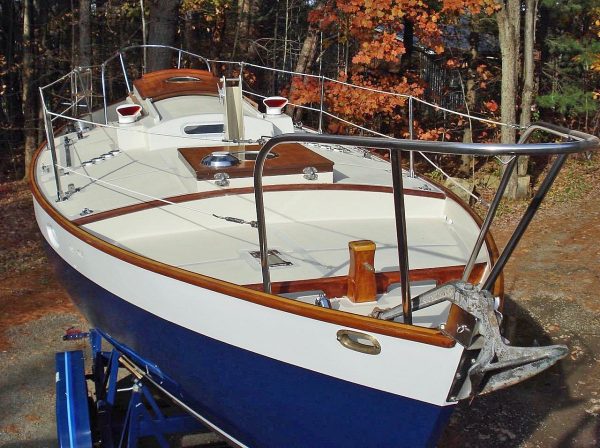
NUTCRACKER on deck.
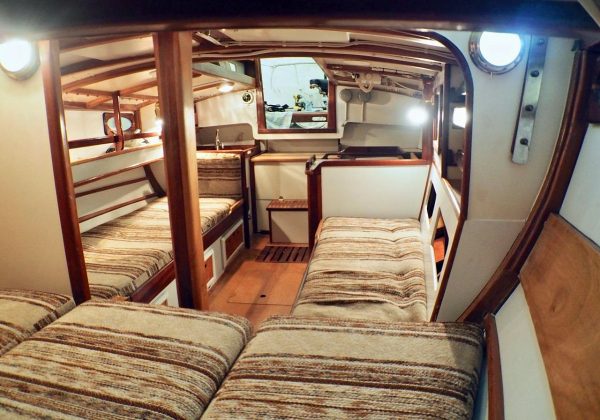
NUTCRACKER’s restored interior.
FOR PHOTOS OF LA LUZ, A FLUSH-DECKED FRANCES THAT HAS BEEN SAILED HALFWAY AROUND THE WORLD, CLICK HERE:
http://frances26.org/laluz.php
Further information may be obtained from:
CHUCKPAINE.COM LLC
Tenants Harbor, Maine 04860-0114
To email Chuck: paineyot@aol.com
PHONE: (207) 691-5195
